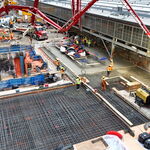Because EMUs are superior in every way?
As for who might buy them.... the following operators use the exact same bilevels.
Altamont Corridor Express Stockton, California 30
Caltrain San Francisco, California 41
Coaster San Diego, California 28[4][5]
Exo Montreal, Quebec 22
FrontRunner Salt Lake City, Utah 22[6]
GO Transit Toronto, Ontario 979 (Largest Operator)[7]
Metrolink Los Angeles, California 184[8][9]
Northstar Line Minneapolis, Minnesota 18
Rail Runner Express Albuquerque, New Mexico 22[10]
Sounder Seattle, Washington 58[11]
SunRail Orlando, Florida 25[12]
Tri-Rail Miami, Florida 26[5][13]
Trinity Railway Express Dallas, Texas 17[5][14]
West Coast Express Vancouver, British Columbia 44[15]




